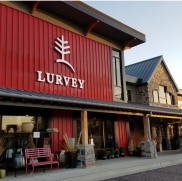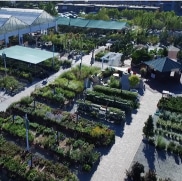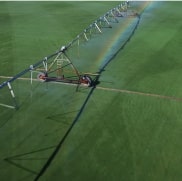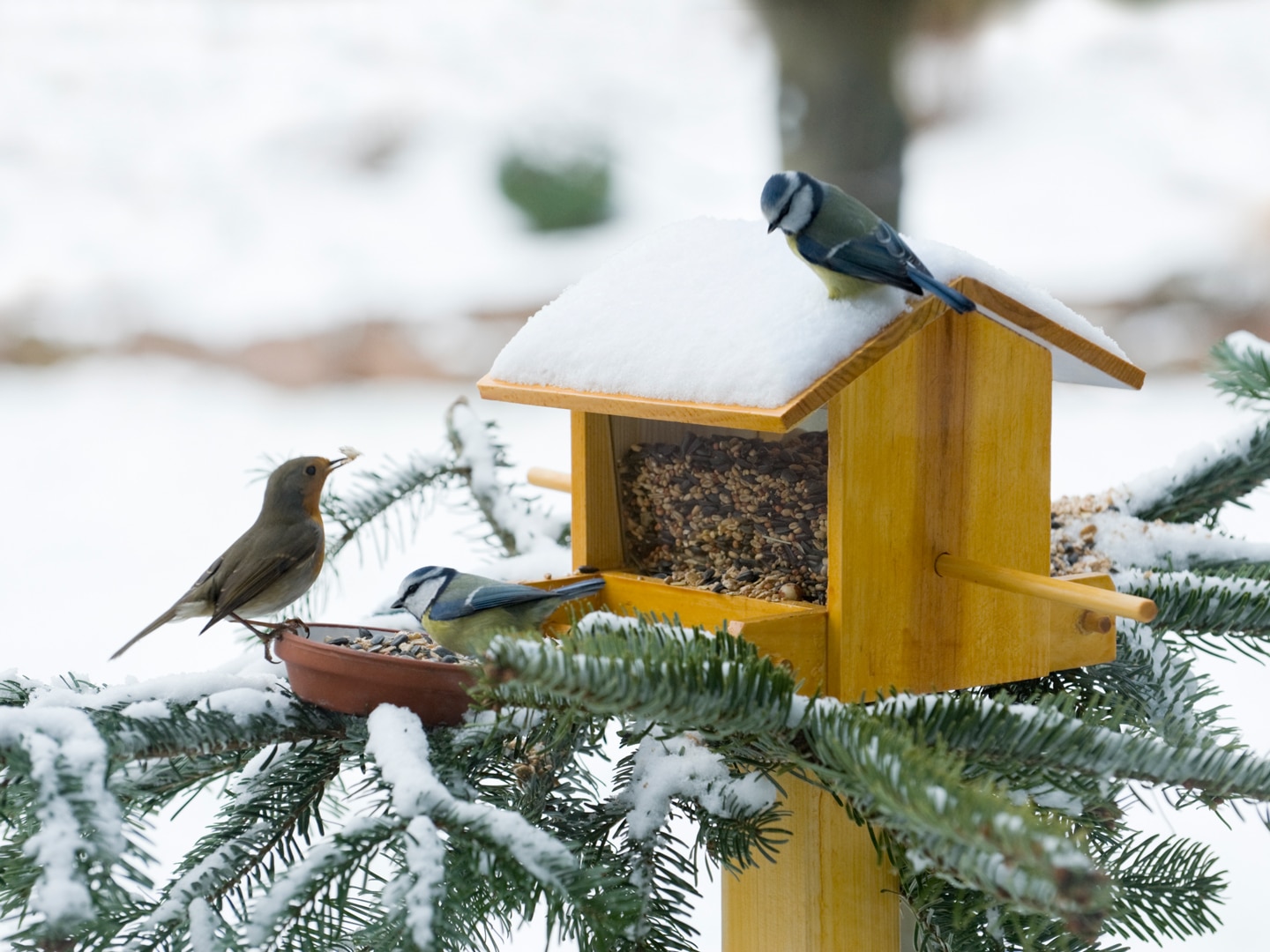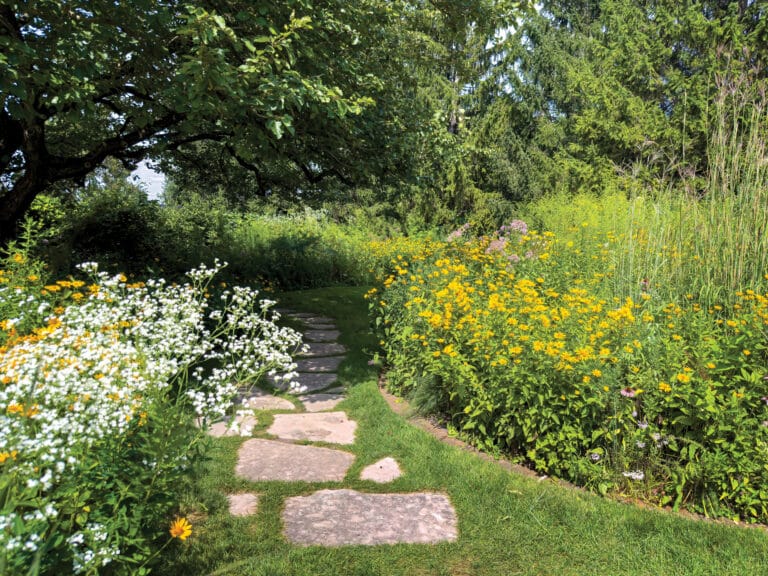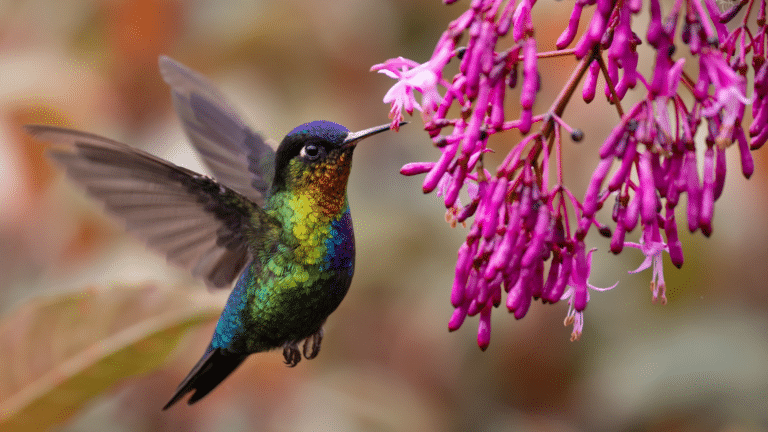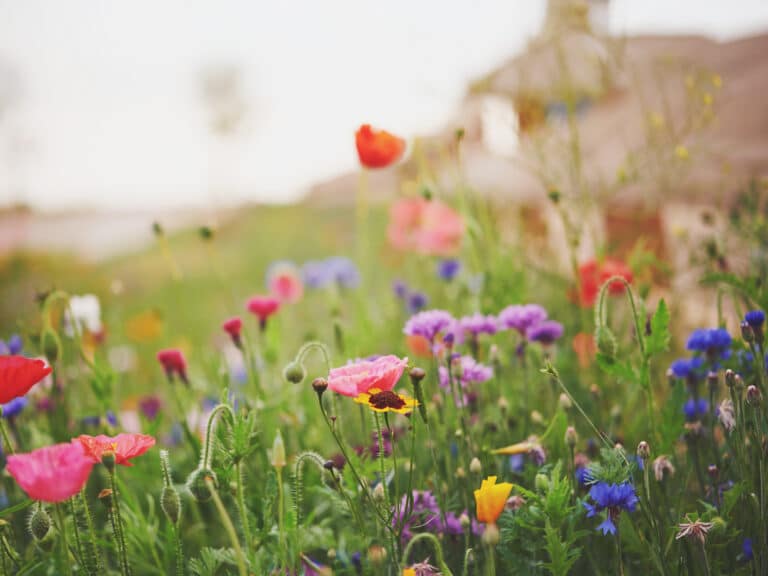Winter bird care starts with preparing your yard for birds in the fall. It not only helps our feathered friends prepare for winter but also provides you with a wonderful opportunity to connect with nature and enjoy the beauty of your local birdlife.
Winter Birds Need the Basics
Preparing to feed the birds in the fall in Illinois, or any other region with distinct seasons, involves some specific considerations. Ensuring that you provide the right food and support for local bird populations during this transitional period is very important. You may also be supporting birds migrating to their winter home. There are three main things that you need to keep in mind while preparing for the colder months: food, water, and shelter.
Ensure Winter Birds Have Quality Sources of Food
First, clean existing feeders before filling your feeders for the fall season. It’s important to clean them thoroughly to prevent the spread of diseases among the birds. Use a solution of one part bleach to nine parts water for cleaning and then rinse well. Ideally, you should empty and clean feeders every couple of weeks or more if they become soiled.
Many bird species start preparing for the harsh winter months during the fall. They need to store enough energy to survive long, cold nights when food sources can be scarce. In general, birds are quite well-equipped to survive in the cold. Their feathers are amazing insulators and even exposed areas like their feet have an intricate network of blood vessels to keep them from freezing. Most birds also maintain a body temperature well above human levels – about 105 degrees Fahrenheit on average – which helps them function even on the most frigid nights.
On cold nights, birds often burn through fat reserves to maintain their body temperature, and that energy expenditure is why they seek out bird seed that’s high in fat and protein. Such meals are vital to winter birds. Without being able to replenish their fat reserve each day, they can perish if their core temperature falls too low overnight. While sunflower seeds and suet are essential, consider providing a variety of foods to attract a wider range of bird species. This can include peanuts, cracked corn, and millet.

Why is suet one of the best food sources in the colder months?
The MVP of winter bird food is hands down, suet. Including suet feeders with suet cakes or blocks will add a valuable source of energy. You can also crumble suet and place it on platform and fly through feeders as well.
- High Energy Content:
A dense source of energy because it is primarily made of animal fat and provides a concentrated source of calories. It’s perfect for helping birds to build up their energy reserves. - Preparation for Winter:
Helps birds pack on the extra fat reserves needed for insulation and energy during the colder months. - Versatility: Suet is an adaptable food source that attracts a variety of bird species. Woodpeckers, nuthatches, chickadees, and other insect-eating birds are particularly fond of suet.
- Protein Source:
Often contains small bits of insects or other proteins, which are valuable for birds, especially during the fall. These proteins are essential for muscle development and repair when insects are less abundant. - Weather Resistance: Suet is relatively weather-resistant compared to some other bird foods like seeds. It doesn’t spoil or get soggy as easily, making it a reliable food source even during wet or damp weather.
While suet is particularly important in the colder season, you can provide it year-round. In the spring and summer, it can attract birds feeding their young, and in the winter, it’s essential for their survival.
Other high-energy food options:
- Black Oil Sunflower Seeds: Cardinals are particularly fond of black oil sunflower seeds. These are high in fat, providing valuable energy during the winter.
- Safflower Seeds: Safflower seeds are another favorite of cardinals and are less likely to attract squirrels and other unwanted visitors.
- Nyjer (thistle) seeds: These are a favorite of finches, especially goldfinches.
- Mixed seed blends: You can find seed blends designed for specific types of birds, such as songbirds or finches.
While above mentioned food is essential, consider providing a variety of foods to attract a wider range of bird species. This can include fruit, peanuts, cracked corn, and millet. We offer a variety of suet and seed for all your bird feeding needs.
Providing a Reliable Source of Water for Winter Birds
Making liquid water sources available during the winter months can be a lifeline for birds when natural water sources are frozen. Water sources also make your yard more attractive to a variety of winter birds.
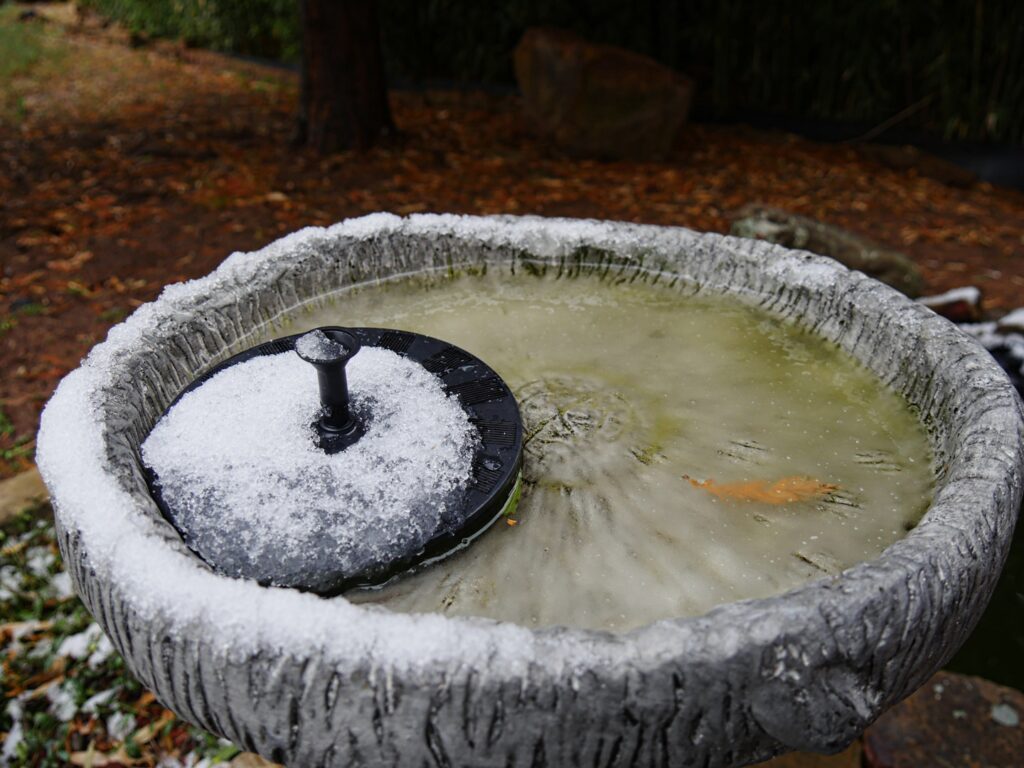
Do you have an existing birdbath?
Consider the following options to keep your birdbath liquid during the cold winter months.
- De-Icers:
Designed to keep a small area of the water in your birdbath ice-free, these are a great option. While not as effective as a heated birdbath, it can still provide a drinking source for birds. - Birdbath Heater:
If you already have a birdbath that you like, add a birdbath heater to keep the water from freezing. These heaters are designed to be placed in the water, are energy-efficient, and safe for birds. - Solar-Powered Birdbath Heater:
If you prefer an eco-friendly option, consider a solar-powered birdbath heater. These devices use energy from the sun to keep the water thawed during the day. Solar powered heaters may not work during cloudy winter days or at night, so they are best in sunny locations.
Would you like to add a birdbath?
These are great options for providing water for winter birds and are ready to keep that water liquid during the winter months.
- Heated Birdbath:
A heated birdbath is one of the best options for providing birds with liquid water during the winter. These birdbaths are equipped with a built-in heating element that prevents the water from freezing. Make sure to place the birdbath in an easily accessible area. - Heated Water Dish:
You can also use a heated water dish, which is similar to a heated pet water bowl. These are convenient for providing water in smaller quantities or for ground-feeding birds like sparrows or doves. - DIY Heated Birdbath:
If you’re handy, you can create your own heated birdbath using a submersible aquarium heater. Ensure that the heater is safe for outdoor use and follow safety guidelines.
Don’t forget to clean and refill the water source regularly, as birds need access to clean water for drinking and bathing. Remember that by providing a reliable source of liquid water during the winter months, your yard can be a lifeline for birds when natural water sources are frozen.
Homes for Winter Birds
As the weather gets colder, birds will appreciate places to take cover from harsh conditions and predators at night. Most birds prefer communal roosting and will congregate in large numbers in the trees. They will also find tree hollows, building cracks and other hiding spots. Some birds, like doves and pigeons prefer roosting on a flat shelf-like area rather than a rounded perch. That’s why they love building ledges, barn beams and the undersides of bridges. Other birds, like American goldfinches, on extremely cold, snowy nights, have been known to burrow into the snow to create a sleeping cavity.
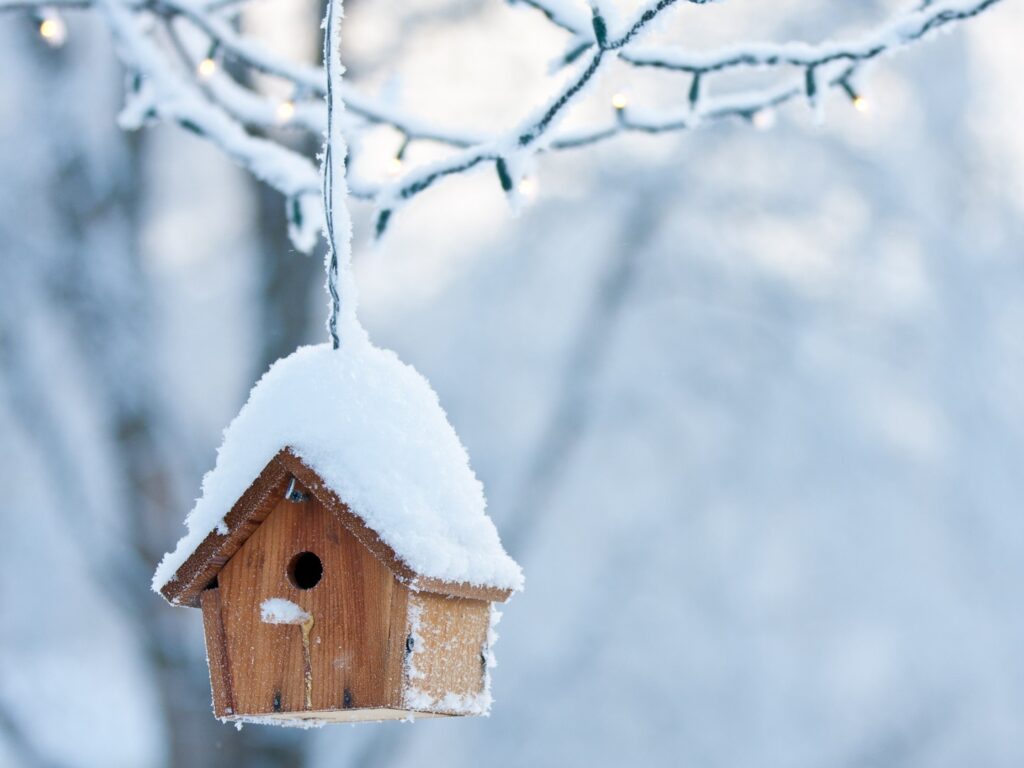
Whether you prefer natural or manmade shelter options you can support birds in your area. Make sure to clean out any birdhouses or roosting boxes you currently have so they are ready to use.
Manmade Shelter Opportunities:
- Bird Houses:
While not every bird species will use a bird house, those that do also use them in the winter. Clean out spring and summer nesting material in the late summer. This will make way for birds that will use a bird house through the winter.
Preferred by some songbirds, bluebirds, chickadees, titmice, screech owls and some woodpeckers, house sparrows, and house finches. - Roosting Pockets:
Hang one of these inexpensive wicker birdhouses in a tree or on a porch. One or two birds will typically fit inside. They provide just enough protection to keep a bird dry and warm through the night.
Preferred by chickadees, titmice, and wrens.
Natural Shelter Opportunities:
- Barns:
Birds often take up shelter in an open-air barn, carport, shed or porch, on winter nights. They prefer places that go undisturbed for most of the night hours.
Preferred by pigeons and doves. - Evergreens:
Most birds prefer the cocoon-like protection that evergreen trees, vines and bushes provide. Many species also utilize these plants through the winter. Simply having one or two evergreen plants on your property can help dozens of birds each night.
Preferred by blue jays, American goldfinches, cardinals. - Thick Shrubs and Bushes:
Even if a shrub or bush has lost its leaves for the winter, a thick mass of branches and twigs can provide birds with protection from predators and the worst winter weather. A hedgerow on your property border or wrapping around your house will help a lot of birds, every night. Some birds prefer to reuse old woodpecker holes and tree cavities.
Preferred by starlings, woodpeckers, and nuthatches.
Lurvey Pro Tip: Avoiding over-grooming your yard in the fall which adds natural options for shelter. Leave some seed heads and dried plants standing as they can provide additional food sources for wintering birds.
Make sure you visit the Birding Supplies section on our website to explore our selection of bird shelters.
By taking these steps to prepare for fall and winter visiting birds, you can provide essential support for your local bird population and create a welcoming environment for these feathered visitors during the changing season.
For more information about local birding consider checking out these local chapters of the National Audubon Society – the Lake County Audubon Society and Chicago Audubon Society.
